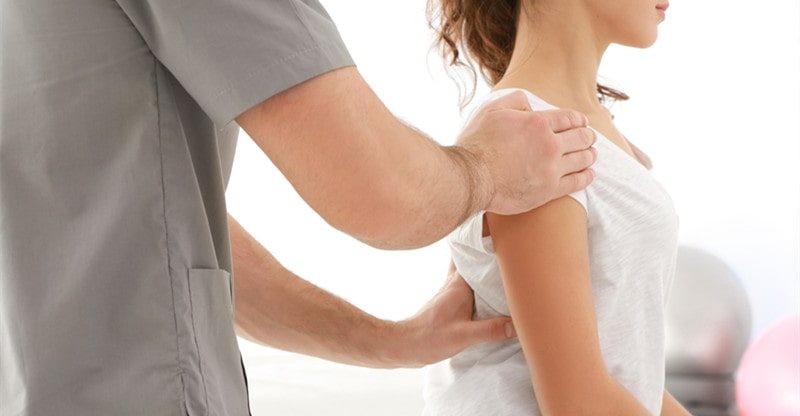Taking Proper Care of Your Spine & Back: 7 Health Tips to Follow
It’s important to be proactive if you want to get and remain fit. That’s why people seek tips for healthy weight loss and sign up for the gym. If you want to keep your spine and back healthy, you need to follow some basic tips. They’ll help you maintain good posture, avoid injuries, and reduce back pain as you get older. This article provides 7 steps to follow when taking care of your spine and back.
1. Seek Medical Advice
If you’re experiencing back pain, the first step is to consult a doctor. They can help you identify the root cause of your pain and suggest a course of treatment. In some cases, medication may be necessary to manage your pain. In other instances, physical therapy or surgery may be recommended.
Perhaps you recently received a sports injury. In this scenario, you may be referred to a physiotherapist for a course of sessions. Some people pursue multilevel artificial disc replacement to improve their range of motion and flexibility after surgery, and potentially decrease the risk of additional issues/surgeries in the future. Board-certified spine surgeons can perform minimally-invasive surgery, and sometimes combine disc replacement with spinal fusion.
2. Visit A Chiropractor
These qualified professionals focus on the diagnosis and treatment of mechanical disorders of the musculoskeletal system, especially the spine. Regular chiropractic care can help prevent back and neck pain, as well as headaches. It achieves this by keeping your spine in proper alignment.
When your spine’s out of alignment, it puts pressure on your nerves, causing discomfort. Chiropractic adjustments can help reduce this pressure and relieve the pain.
Other benefits of chiropractic care include:
- Increased mobility and range of motion
- Decreased risk of injury
- Better posture
- Greater overall health and well-being
3. Be Careful When Lifting Things
This is one of the most common ways that people injure their backs. The spine isn’t designed to handle a lot of weight and even if you lift something correctly, you can still cause serious damage. The spine isn’t meant to support heavy loads for long periods of time, and doing so can put a lot of strain on the muscles and ligaments that hold it in place.
Here are some tips to avoid injuring your back when lifting:
- Use your legs, not your back, to do the lifting. Squat down and use your leg muscles to slowly stand up and lift the object.
- Avoid twisting your body while lifting as this puts unnecessary stress on the spine.
- Keep the object close to your body as you lift it as this will help you maintain balance and control.
- Don’t try to lift more than you can handle. If an object’s too heavy, get help from someone else or use a dolly.
4. Stay Active And Get Plenty Of Exercises
This helps to strengthen the muscles that support your spine and back, and it also keeps your joints mobile. Some of the best exercises for spine health are aerobic activities (e.g. walking, swimming, and biking) because they help to increase blood flow and reduce inflammation. Strength-training exercises such as sit-ups, push-ups, and rowing are also beneficial.
If you’re not familiar with exercising, begin slowly and gradually escalate the intensity of your workouts. Always warm up before any physical activity and listen to your body (stop if you experience any pain).
5. Practice Good Posture
This is important for spine and back health because it helps to evenly distribute the weight of your body, keeping your spine in alignment. When you have good posture, the muscles and ligaments that support your spine aren’t overworked, which can help to prevent pain.
Some tips for practicing good posture are:
- Stand up straight and avoid slouching.
- When sitting, keep your back straight and your shoulders relaxed. Use a chair that supports your lower back if needed.
- Avoid crossing your legs when sitting. Instead, place both feet flat on the ground.
6. Consider Pilates And Massage
Pilates
This is a physical fitness system that was developed in the early 20th century by Joseph Pilates. It’s practiced by millions of people worldwide and is especially popular among dancers and athletes. Pilates exercises are designed to improve posture, muscle flexibility, and joint mobility – and to help prevent injuries. Some of the most common pilates exercises include the following:
- The Hundred
- Single-leg Circles
- Double-leg Stretch
- Rolling Like a Ball
- Neck Pull
- Spine Twist
- Saw
Massage
A massage is a technique in which the practitioner uses their hands to manipulate the soft tissues of the client’s body. The purpose is to promote relaxation, improve circulation, reduce muscle tension, and relieve pain. There are many different types of massages, such as Swedish massage, deep tissue massage, sports massage, and trigger point massage. There are many potential benefits, including:
- Reduced stress and anxiety
- Improved sleep
- Relief from headaches and migraines
- Reduced muscle tension and stiffness
- Increased flexibility and range of motion
- Improved circulation
7. Be Practical
There are many everyday things you can do to help preserve your spine and back. Here is a list of examples:
- Use a supportive pillow when sleeping to reduce neck strain.
- Stretch regularly to maintain flexibility and reduce tension.
- Wear supportive shoes because good footwear can help prevent injuries and pain in the lower back.
- Avoid sitting or standing in the same position for long periods of time.
- Eat a balanced diet consisting of lots of fruits, vegetables, and whole grains. Maintaining a healthy weight is important because being overweight or obese can put stress on your back and spine.
- Drink plenty of water each day to keep your discs hydrated. Dehydration can lead to muscle cramps and tension headaches, both of which can aggravate back pain.
- Avoid alcohol and caffeine because both can dehydrate you.
Thanks to these 7 tips you’ll be able to properly care for your back and spine. In return for your hard work and discipline you’ll reap the benefits both now and in the future. You’ll be able to live your daily life and meet every challenge without experiencing pain or discomfort in your back.



